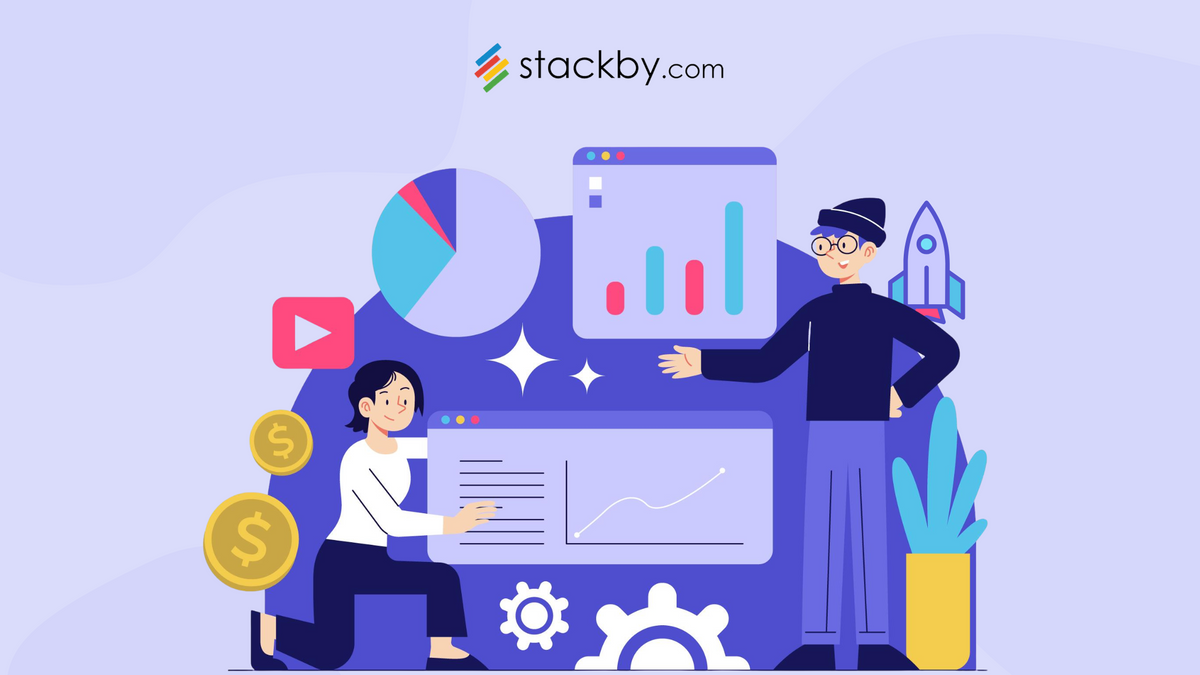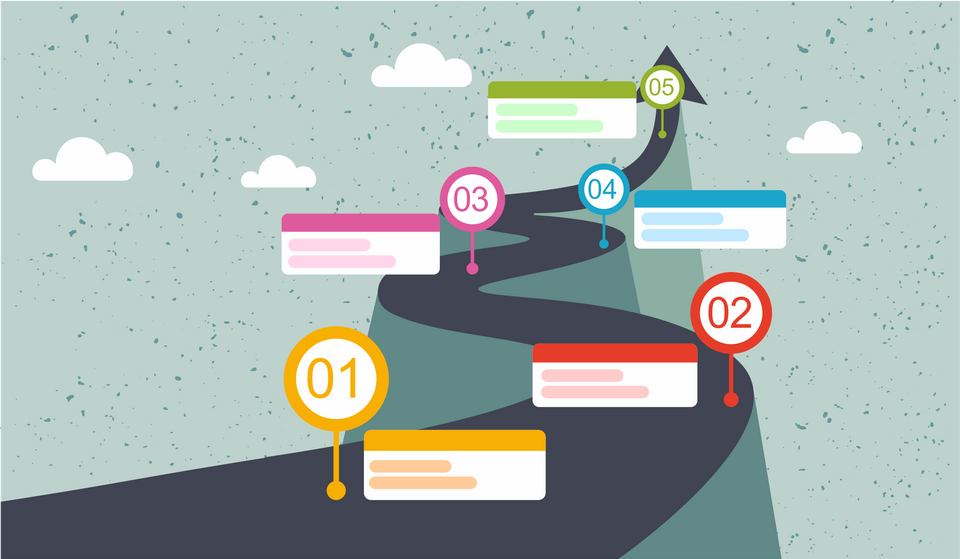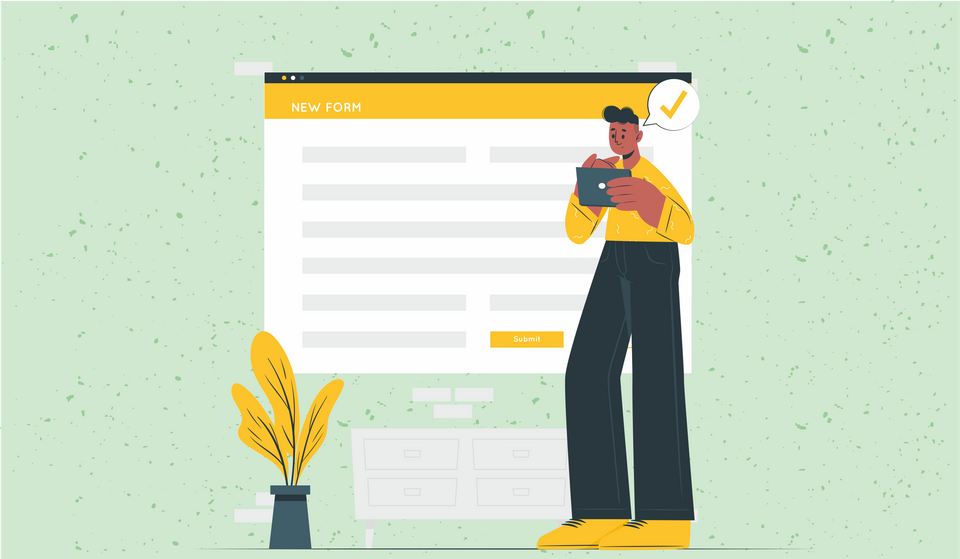Build a Smarter Project Workflow: Project Management Database Guide + Templates
Tired of chaotic project tracking through spreadsheets and emails? Learn how a Project Management Database centralizes your workflows, improves team collaboration, and boosts project success. Bonus: Ready-to-use Stackby templates included.

A project’s success hinges on a reliable system for tracking progress, assigning responsibilities, and centralizing data whether you're managing construction sites, digital marketing campaigns, or software development.
Yet, old-school methods like Excel, pen-and-paper, or endless email chains are riddled with inefficiencies and inaccuracies.
👉 This is where a Project Management Database becomes a game-changer.
In this guide, you'll learn:
- Why traditional tools are failing modern teams
- What a project management database really is
- Its top benefits for collaboration and efficiency
- How to build one in Stackby (step-by-step)
- Ready-to-use templates to start instantly
- Why Stackby is your all-in-one PM platform
For other similar templates, see the Stackby templates page.
Why Traditional Tools Are Failing
Common issues with notes, spreadsheets, and email-based management:
- ❌ No real-time collaboration
- ❌ Lack of version control → overwriting and errors
- ❌ No automations or notifications
- ❌ Scattered project data → data silos
- ❌ Missed deadlines and lack of accountability
Teams need more than static tools — they need a dynamic system that adapts to project changes in real-time.
The Problem with Managing Projects on Notes and Spreadsheets
It’s familiar territory. Someone starts scribbling on notes during a meeting; someone updates an Excel sheet; and someone else misses a task altogether. The end result? Fractured conversations, breached deadlines, and an utter lack of accountability.
These are just some common downsides of handling project management that way:
- There is no real-time collaboration, only one person can update the spreadsheet at a time.
- No version control, which leads to overwritten data or even lost updates.
- Limited automation - tasks can't be automatically assigned, updated, or notified.
- Data silos wherein information is scattered over emails, chat threads, and files.
Teams need more than a static spreadsheet- they need a dynamic system that serves as the central source of truth. Understanding the spreadsheets vs database comparison can help clarify why traditional methods fall short in today's collaborative work environment.
What is a Project Management Database?
A project management database is a centralized source for planning, executing, and delivering the entire project from the planning stage to follow-ups during the execution phase, and finally to delivery.
Just think of it like a really smart interactive spreadsheet supercharged. Unlike traditional project management tools, a database approach offers more flexibility and customization to fit your specific workflow needs.
What is a Database ?
Just think of it like a really smart interactive spreadsheet supercharged.
Core Benefits of Using a Project Management Database
So here's why you must throw away those scrap old tools and go forward with a project management database:
1. Centralized Information Hub:
All of your project data is centralized in one space-tasks, deadlines, budgets, and team roles. No more searching through disparate tools.
2. Real-time collaboration:
Team members can comment, update, and tag others within the platform. Everyone stays on the same page-literally.
3. Activity Monitoring & Status Updates
A means of monitoring the progress of activities is through the best kanban board software, calendars, or Gantt charts. Know all the delayed or due activities by just a glance.
4. Customized Workflows
Project databases offer you ways to design workflows on your own instead of being constricted to those offered by inflexible tools.
5. Automations and Integration
Automate monotonous tasks through 3rd party tools or in-built integration.
Teams needing real database capability for project tracking can move to an alternative to trello such as Stackby for more power.
How to Build a Project Management Database in Stackby (6 Easy Steps)
You know the truth: managing projects through scattered notes, disconnected spreadsheets, and endless email threads never really worked. You’re always switching tabs, checking updates, and putting out fires. It creates a constant sense of chaos, unnecessary stress, and worst of all, drains your energy.
Now imagine this instead:
A single platform where your entire team knows exactly what needs to be done, by whom, and by when. Where workflows, conversations, files, deadlines, and automations all live in one place, clearly structured and effortlessly accessible.
That’s Stackby.
It combines the simplicity of a spreadsheet with the power of a relational database. It’s built to give you complete control over your project workflows, without writing a single line of code. Whether you’re planning sprints, assigning tasks, tracking milestones, managing cross-functional teams, or building a product roadmap, Stackby adapts to the way your project workflows actually operate.
Here’s what makes it stand out:
- Customizable project workflows with different views: Kanban, Forms, Calendar, Gallery, Grid, Timeline and List.
- Built-in automations that take the manual effort out of task updates.
- Real-time collaboration with commenting, sharing, and activity tracking.
- 5000+ integrations through native connectors and third-party tools.
- Reporting dashboards with built-in apps like Charts, Summary Box, and Pivot Tables or Stack Schema.
- Power-ups for role-based permissions, conditional logic in forms, advanced reminders, and more.
No more tool-hopping. No more outdated sheets. Just one place to manage it all.
Getting started with Stackby is quick and intuitive. Below is a practical step-by-step process on how you can get started:
Step 1: Start with a Template or Blank Table
Stackby has ready-to-use templates and functionality for dozens of projects. You may either:
- Use a Project Tracker Template
- Start from scratch with a blank table for complete customization
👉 Teams who need granular control can implement a project task tracker to link projects, tasks, and teams in a single, dynamic workspace.
Step 2: Customize Your Table Structure
Update tables as needed for your project-specific use, add or subtract columns and link them across tables for a synced workflow. Here are some potential columns:
- Project Name
- Assigned To
- Priority (Single select)
- Status (Kanban view)
- Start and End dates
- Dependencies
- Comments
Step 3: Set Up the Views
Views make it possible to see your project data from the lens that suits you best.
- 🟢Grid View for a classic spreadsheet-style grid interface.
- 🟢Kanban View for visualizing tasks across stages, perfect for agile workflows.
- 🟢Calendar View to map content, deliverables, or deadlines over time.
- 🟢Gallery View to manage creative assets, mockups, or any design-heavy tasks.
- 🟢List View when you just want a clean, focused task list.
- 🟢Timeline View for high-level tracking across sprints, phases, or dependencies.
- 🟢Form View to collect project requests, bug reports, or team input, all directly into your database
Step 4: Invite Team Members and Assign Tasks
Collaborative checklists and comments will work wonders — especially when paired with tools like a CRM template to track client communication.
Step 5: Do Automations and Integration
Link anything to an API or tools like Google Calendar, Slack, Gmail, and Trello using Stackby integrations.
👉 Project databases can integrate compliance tracking to ensure project milestones meet regulatory requirements.
Step 6: Add Apps to Build Dashboards
Use built-in apps like:
- 📊 Charts
- 📌 Goal Tracker
- 🧮 Pivot Tables
- 🔄 Stack Schema
Create role-based reports and real-time performance dashboards.
Projects involving physical goods run smoother with a customizable inventory management system template.
4 Project Management Database Templates in Stackby [Ready to use]
Want to hit the ground running? Try these ready and customizable Stackby templates to streamline your projects:
Customizable Stackby templates help streamline projects:
“Grab one of our ready‑to‑use project management templates from our Templates page.”
Project-based organizations can streamline hiring by using a candidate tracker template for monitoring applicants tied to each project.
1. GAP Analysis Template
Perfect for identifying where you are vs. where you want to be. Use the GAP Analysis Template.
- Outline current vs. desired states across processes or departments
- Assign owners, track action items, and close operational gaps
- Customize views to analyze goals by status, priority, and category
2. Project Portfolio Management Template
Ideal for organizations overseeing several initiatives. The Project Portfolio Management Template includes:
- A portfolio dashboard to categorize projects by priority, status, and owner
- Resource tracking and budget fields to manage teams and costs
- A grid and timeline layout to keep the big picture front and center
3. Construction Project Management Template
Perfect for construction managers or teams with multi-phase projects. The Construction Project Management Template features:
- Task tracking with phases, asset allocations, start/end dates, and budgets
- Calendar and Kanban views to monitor tasks and project phases
4. Product Roadmap Template:
All set! Now you can plan and execute your product launches with clarity. The Product Roadmap Template is ideal for product and tech teams:
- Organize features, user stories, sprints, and timelines in one space
- Link epics to tasks, add due dates, owners, and progress stages
- Use Timeline and Kanban views to track your roadmap visually
Each of these templates provides for full editing of fields, views, and automations, so you can customize these however best suits your process.
Sales and project tracking often go hand-in-hand. Try our Sales Pipeline Template to align both.
Cross-functional teams benefit from a staff database management system that unifies employee details, project roles, and team assignments.
Why Stackby Is Your All-in-One Project Management App
Managing projects with spreadsheets is like sailing without a compass — you might get there eventually, but not without detours and delays.
Stackby brings:
✅ Centralized control
✅ Custom workflows
✅ Real-time collaboration
✅ 5000+ integrations
✅ Role-based access
✅ Visual dashboards
✅ No-code flexibility
Conclusion: 🎯 Want to take control of your projects and finally streamline everything?
Managing a project today with some notes and spreadsheets is similar to sailing a ship without a compass. You can still stay floating but never get to the destination very swiftly.
Stackby changes the way teams plan, collaborate, and execute their projects. For teams looking to understand different approaches, our guide to project management provides comprehensive insights into modern methodologies.
It is more than a database; it is the productivity engine for your team. Stackby would provide everything that you require for bringing structure, visibility, and momentum to your projects, whether you are a single entrepreneur or handling cross-functional teams.
Property teams can centralize client and transaction data using a real estate database template for greater efficiency.
Ready to get your work in order and put your projects on a fast track to productivity?
This article was originally published in June 2025 by Stackby Content Team. The most recent update was in July 2025.



![13 Best Business Management Software for your Work [2025]](/blog/content/images/size/w960/2024/03/stackby-business-blog-image-1.jpg)
